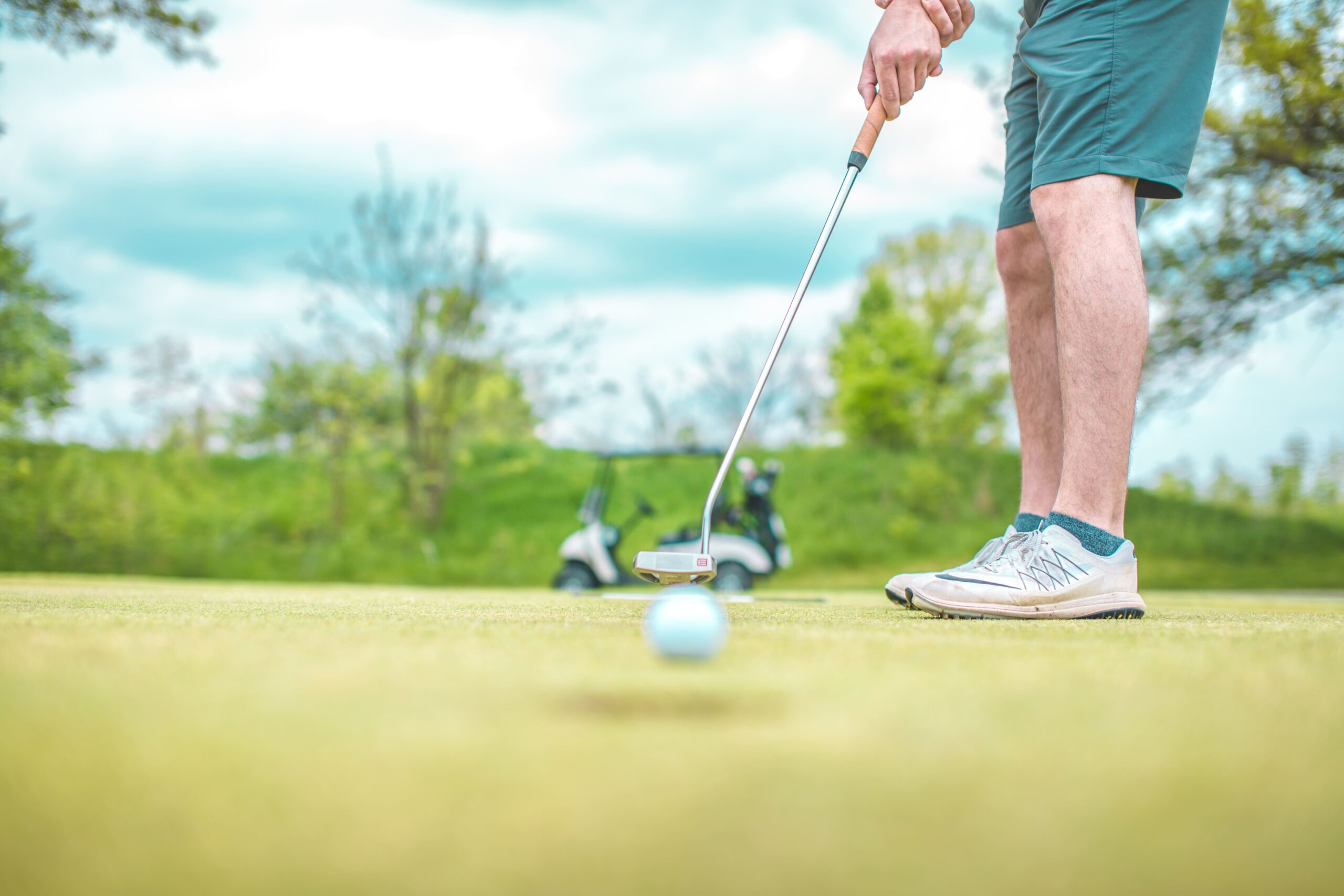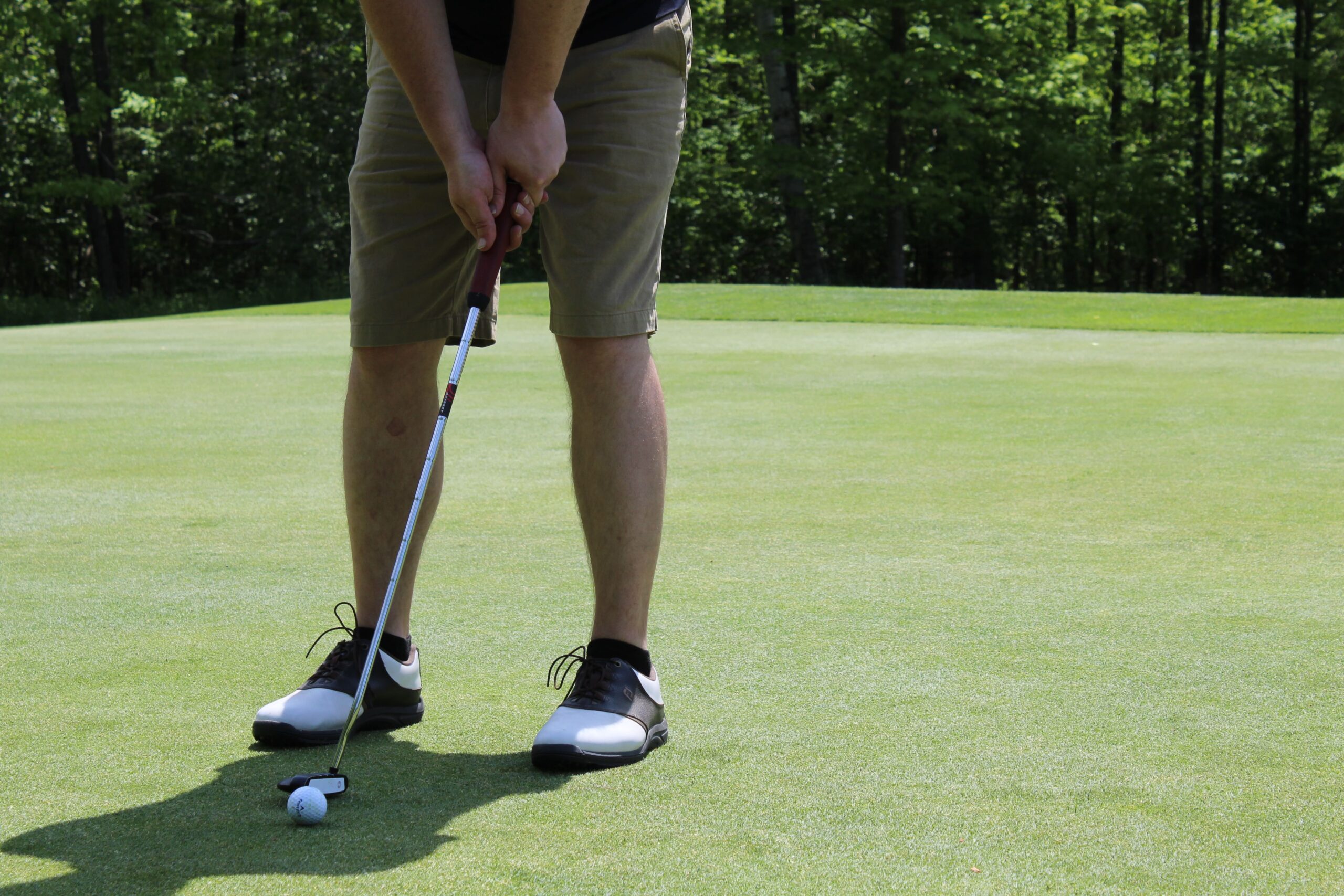When it comes to golf, mastering the long drive is often the first skill that comes to mind. However, as the saying goes, “Drive for show, putt for dough.” Putting in golf is an equally, if not more, critical aspect of your game that can make or break your score. This guide aims to demystify the art of golf putting, giving you essential tips to enhance your short game.
What is putting in golf?

Putting in golf refers to making a light stroke on the green in the game of golf. Unlike driving or approach shots, putting requires a different set of skills and a unique club called a “putter.”
Why is putting is crucial?
A solid golf putting technique can dramatically lower your scores and give you a competitive edge. Many golfers spend a lot of time perfecting their swings but neglect the art of putting, only to end up with frustrating near-misses on the green.
Basic Techniques for Golf Putting
The Grip
Unlike the grip you use for longer shots, golf putting typically involves a softer, more delicate hold. This allows for better control and less wrist movement, which can throw off your putt.
The Stance
When it comes to the stroke in golf putting, less is more. A simple, straight-back, straight-through stroke is often the most effective.
The Stroke
When it comes to the stroke in golf putting, less is more. A simple, straight-back, straight-through stroke is often the most effective.
Tips for Better Golf Putting
Golf putting may seem straightforward, but it’s an intricate aspect of the game that requires specialized knowledge and practice. Below are some tips to help you refine your putting skills:
Read the green
Why it's important:
Reading the green helps you understand how your ball will move after you’ve struck it. It’s not just about looking for slopes; it’s about analyzing the texture of the grass, understanding moisture levels, and even taking note of grain direction.
How to Do It:
Start by standing behind the ball and surveying the lay of the land. Look for high and low points, the direction of grass blades, and how the light reflects off the surface. You can even use your feet to feel the green slopes as you walk towards your ball.
Practice Tempo
Why it's important:
The tempo of your putting stroke is crucial for controlling the distance. Too fast, and you may overshoot. Too slow, and you may not even make it to the hole.
How to Do It:
Use a metronome or a rhythm-counting technique to establish a consistent tempo. The count could be as simple as “one-two,” with “one” being the backswing and “two” being the contact and follow-through. Consistency is key.
2. Practice Tempo
Why it's important:
The tempo of your putting stroke is crucial for controlling the distance. Too fast, and you may overshoot. Too slow, and you may not even make it to the hole.
How to Do It:
Use a metronome or a rhythm-counting technique to establish a consistent tempo. The count could be as simple as “one-two,” with “one” being the backswing and “two” being the contact and follow-through. Consistency is key.
3. Distance Control
Why it's important:
Judging distance accurately enables you to choose the right force and direction when striking the ball, which is critical when dealing with varying slopes and green conditions.
How to Do It:
Practice different lengths of putts during your practice sessions. Use markers to denote specific distances, and work on getting the ball to stop as close to these markers as possible. Keep your backswing length consistent and adjust the speed of the stroke for different distances.
4. Aim Small, Miss Small
Why it's important:
Aiming at a broad target like ‘the hole’ can often make your focus too generalized. Aiming at a smaller target within the hole can improve your accuracy.
How to Do It:
Practice different lengths of putts during your practice sessions. Use markers to denote specific distances, and work on getting the ball to stop as close to these markers as possible. Keep your backswing length consistent and adjust the speed of the stroke for different distances.
5. Keep your head still.
Why it's important:
Movement in your head can disrupt the alignment of the putt and lead to inconsistent results.
How to Do It:
As you set up for the putt, lock your eyes on the ball and keep your head still throughout the stroke. Imagine a laser line from your eyes to the ball, and try not to break that line until the ball has left the putter’s face.
5 Golf Putting Exercises You Can Do at Home
Practicing your putting at home is a convenient way to improve your short game. Let’s delve into five simple yet effective golf putting exercises to sharpen your skills:
1.The Coin Drill

What You Need:
- A putter
- A golf ball
- A coin or small object
How to Do It:
Place a coin about a foot away from the edge of a cup or target on the floor. Your aim is to putt the ball so that it stops right on the coin. This exercise helps you focus on precision and control.
2. The straight-line drill
What You Need:
- A putter
- Several golf balls
- Painter’s tape or a yardstick
How to Do It:
Lay down a straight line using painter’s tape or place a yardstick on the floor. Practice putting along this straight line to improve your stroke’s direction. The goal is to keep the ball on the line from start to finish.
3.The gate drill
What You Need:
- A putter
- A golf ball
- Two small objects (like tees or coins)
How to Do It:
Create a “gate” using two small objects placed a putter’s width apart. Your aim is to putt the ball through the “gate” without hitting the objects. This exercise focuses on accuracy and alignment.
4.Distance Control Drill
What You Need:
- A putter
- Several golf balls
- Objects to act as distance markers (e.g., tees, coins)
How to Do It:
Place several distance markers at different distances from your starting point. Practice putting to each marker, working on controlling your stroke length to stop the ball at each specific distance.
5.Around-the-Clock Drill
What You Need:
- A putter
- 12 golf balls
- A cup or target
How to Do It:
Arrange 12 golf balls around a cup or target, mimicking the numbers on a clock. Try to sink each putt, moving in a clockwise direction. This helps you practice putting from various angles and improves your overall versatility.
Common Mistakes in Golf Putting
Overthinking
One of the biggest mistakes in golf putting is overthinking the shot. Trust your reading of the green and your stroke.
Poor Alignment
Poor alignment can lead your putt off course before you even make contact with the ball. Make sure you’re lined up correctly before taking your shot.
My Conclusion
Golf putting is a nuanced art that requires practice, precision, and a good amount of finesse. By focusing on these basic techniques, tips, and exercises you can do at home, you can significantly improve your short game and, ultimately, your scores. Whether you’re practicing on the green or in your living room, these guidelines will help you elevate your golf putting game. Happy putting!
